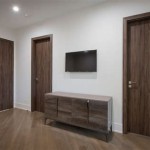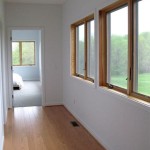Form in Interior Design: Examples and Concepts
Form, in the realm of interior design, refers to the three-dimensional shape of objects and spaces. It's a fundamental element of design, alongside color, texture, and light, that plays a crucial role in creating a cohesive and visually appealing environment. The form of furniture, architectural elements, and even the arrangement of objects within a space can influence the overall mood, functionality, and aesthetic appeal of a room. Understanding the principles of form and how it interacts with other design elements is essential for any aspiring interior designer.
Understanding Form: Organic and Geometric
Form in interior design can be broadly categorized into two primary types: organic and geometric.
Organic forms, as the name suggests, are inspired by nature. They are characterized by their flowing, irregular shapes and curves, often found in elements like plants, rocks, and water. In interior design, organic forms can be introduced through the use of natural materials such as wood, stone, and leather. They can also be achieved through the use of furniture with rounded edges, free-flowing patterns, and natural textures.
Geometric forms, on the other hand, are characterized by their sharp, angular shapes, and lines. They are inspired by human-made structures and often incorporate elements like squares, circles, triangles, and rectangles. Geometric forms can be introduced through the use of furniture with straight lines, symmetrical patterns, and geometric patterns on textiles and wallpapers.
The Importance of Form in Interior Design
Form plays a crucial role in creating a harmonious and visually appealing interior. It can influence:
1. Mood and Atmosphere: Different forms evoke different emotions. For example, rounded, organic forms tend to generate a sense of comfort and relaxation, while sharp, geometric forms can create a more formal and structured atmosphere.
2. Functionality: Form is closely linked to function. For instance, a sofa with a rounded back may be comfortable for lounging, while one with a straight back may be better suited for formal seating.
3. Visual Interest: The use of varied forms can create visual interest and prevent monotony. By combining different forms, a designer can add depth, dimension, and dynamism to a space.
Examples of Form in Interior Design
Here are some examples of how form is used effectively in interior design:
1. Curved Sofa: A curved sofa with organic forms can soften the edges of a room and create a sense of warmth and intimacy.
2. Geometric Accent Chair: A geometric accent chair, with its sharp lines and angles, can add a touch of modernism and sophistication to a space.
3. Circular Rug: A circular rug can break up the monotony of a rectangular room and create a focal point.
4. Sculptural Light Fixture: A unique and sculptural light fixture can become a statement piece and add visual interest to a space.
5. Architectural Features: The form of architectural features like windows, doors, and ceilings can significantly impact the overall feel of a space. For example, vaulted ceilings can create a sense of grandeur and openness, while arched doorways can add a touch of elegance and refinement.

The Seven Elements Of Interior Design Form

Using Form In Interior Design To Create A Unique And Beautiful Space Diy Home Comfort

How To Use Geometric And Organic Forms In Interior Design

Why Form Should Follow Function In Interior Design Foyr

Why Form Should Follow Function In Interior Design Foyr

The 7 Elements Of Interior Design In 2025 Diy Home Comfort

Tips For Working With The Seven Elements Of Design Idi New Zealand

Form Vs Function The Ultimate Interior Design Question L Esseiale

How To Choose An Interior Design Style Flooring

Minimalist Interior Design Furniture Florida Leather Gallery








